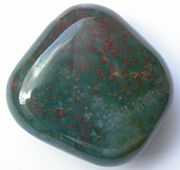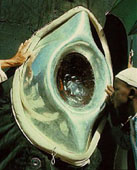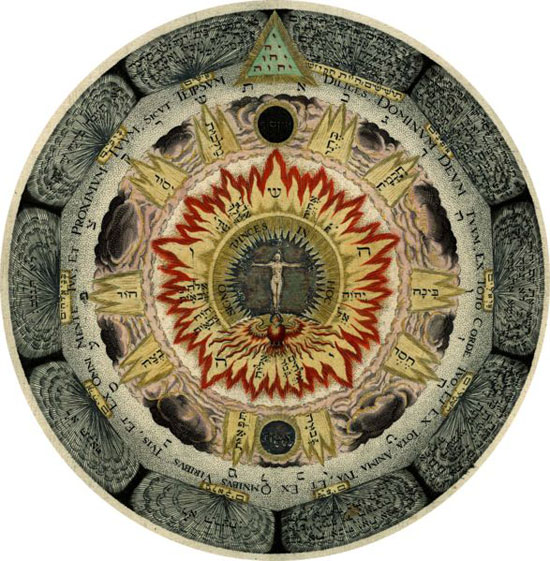The Philosopher's Stone

The Philosopher's Stone entered western European alchemy from the Arab and Islamic world, where the Black Stone of Mecca was held sacred.
The Philosopher's Stone seems like a secular attempt to find spiritual values in precious stones in much the same way the Church encouraged relics and icons. Many were thought to have curative powers - certainly Isidore of Seville, Avicenna of Persia and Hildegard of Bingen thought so. It also became associated with the Holy Grail legends for there were many who believed the Grail was a precious stone, not a cup. Perhaps it was an emerald, they said, and perhaps it fell from the sky with Lucifer (Mecca's Black Stone may have been a meteorite).
The emerald wasn't the only green candidate. One of the most popular stones in medieval times was the bloodstone, otherwise known as Heliotrope, which was said to feature the blood of Christ speckling the green. It was said that it protected the bearer against evil spirits. In more recent times, Mormon leader Brigham Young had a bloodstone amulet on a chain as a protection against danger (it may have belonged previously to Joseph Smith, who had a number of seer stones). Below: a bloodstone and the Black Stone of Mecca.


Then there was the idea that the Philosopher's Stone was not a stone at all but Christ himself - the Divine Child. This served as a medieval corrective to the Cult of the Virgin Mary (Him rather than Her) and was an inspiration to alchemists striving to repeat in the lab what had happened on the Cross so many centuries earlier: crucifixion, death and resurrection - a black phase, a white phase and a red phase, separating the spirit from the body.
(It is this idea that fascinated Casanova as he pursued the Elixir of Life and that Rowling picks up in her Harry Potter books with the idea of a magical child who goes through a rite of passage.)
For later alchemists, however, the Philosopher's Stone was a metaphor for sex (or - in reverse - returning to the womb), and what they had in mind was something like the "cosmic rose" of German alchemist Heinrich Khunrath:

This engraving combines elements of alchemy, Christianity and the Kabbalah, and it foreshadows Rosicrucianism. It is from Khunrath's 1595 book, Amphitheatrum Sapientiae Aeternae ("Amphitheater of Eternal Wisdom"). The Hebrew lettering and fiery rose petals are artistic but it's the naked woman at the center of the red flames that matters...
